Starting your hiking journey is an exciting adventure, but stepping into the wilderness unprepared can quickly turn a fun day out into a challenging experience. Whether you’re planning your first hike or looking to upgrade your gear for longer trails, choosing the right equipment is essential to ensure safety, comfort, and enjoyment. The right gear not only helps you navigate trails more easily, but it also prevents common issues like blisters, dehydration, or being unprepared for sudden weather changes.
As a beginner, it can be overwhelming to figure out what you really need versus what’s just nice to have. From footwear that will keep your feet comfortable on rugged terrain to backpacks that fit all your essentials without weighing you down, each piece of gear plays a key role in making your hike successful. In this guide, we’ll dive into every aspect of hiking gear, giving you practical tips and recommendations to make your outdoor experience smooth and enjoyable from start to finish.
Starting your hiking journey can feel a bit overwhelming, but with the right steps, you’ll be ready to hit the trails with confidence. Here’s a simple approach to get started on the right foot:
When you’re just starting out, it’s important to pick a trail that matches your fitness level and experience. Start with short, easy trails that are well-marked and not too steep. Look for beginner-friendly hikes with smooth paths and minimal elevation gain.
📝 Tip: Use hiking apps or websites to find trails near you, and read reviews to see if they’re suitable for beginners.
You don’t need to invest in a ton of expensive gear to start, but having a few essentials is key for safety and comfort:
🎒 Tip: As you start hiking more often, you can gradually invest in more specialized gear.
It’s important not to overdo it when you’re new to hiking. Start with short hikes (about 1-3 miles) and gradually increase the distance and difficulty as you get more comfortable. This will help you build stamina and avoid getting discouraged.
👟 Tip: Track your hikes and progress using a fitness app or journal. It’s motivating to see how far you’ve come!
Safety should always be a top priority when you’re out on the trails. Before you go:
🔦 Tip: If you’re hiking alone, choose busy trails where there are likely to be other hikers.
Hiking isn’t just about getting to the top; it’s about enjoying nature and taking in the beauty around you. Don’t rush — take your time, breathe in the fresh air, and appreciate the views. Hiking is a great way to relax, exercise, and explore.
🌲 Tip: Bring a friend or join a hiking group to make the experience even more enjoyable and motivating.
When it comes to hiking, your footwear is the most important piece of gear you’ll invest in. The right shoes can make your hike comfortable and enjoyable, while the wrong ones can lead to blisters, sore feet, or even injuries. Here’s what you need to know about choosing the perfect footwear for hiking, especially if you’re a beginner.

Your feet do the heavy lifting when you’re hiking, and the right shoes will provide comfort, support, and protection as you tackle different terrains. Whether you’re walking on smooth paths or rocky trails, having proper footwear can prevent foot pain and injuries while making your overall experience more enjoyable.
There are different types of hiking footwear depending on the trail difficulty, weather conditions, and your personal comfort needs. Here’s a breakdown:
Hiking Shoes: These are low-cut, lightweight, and flexible. They’re perfect for easy to moderate trails and offer more support than regular sneakers. If you’re hiking on well-maintained trails, hiking shoes are a great choice for beginners.
Hiking Boots: These are a bit heavier and provide ankle support, which is important on rocky or uneven terrain. They offer better protection against bumps and help prevent ankle sprains. Hiking boots are a good choice if you plan on tackling longer, more difficult hikes or carrying a heavy backpack.
Trail Runners: Trail running shoes are light and breathable, designed for running on trails but also work well for hiking, especially on smoother paths. They’re ideal if you prefer a lightweight option and are hiking in dry conditions.
When choosing hiking footwear, consider these important factors:
Fit: A proper fit is crucial to avoid blisters and discomfort. Make sure your shoes have enough room for your toes to wiggle, but they shouldn’t be too loose. You should also have enough space to wear thicker socks, which are common for hiking.
Support: Look for footwear that offers good arch and ankle support. If you’re hiking on rough terrain, sturdy shoes or boots with solid soles will help prevent injuries.
Traction: The sole of the shoe should have good grip (often referred to as traction) to prevent slipping on wet or uneven surfaces. Look for lug patterns (those deep grooves in the sole) for better grip.
Waterproofing: If you’re hiking in wet conditions or crossing streams, waterproof shoes or boots will keep your feet dry. However, waterproof shoes may be less breathable, so if you’re hiking in dry, hot areas, you might prefer non-waterproof shoes for better ventilation.
Breathability: Hiking can make your feet sweat, so it’s important to have shoes made of breathable materials like mesh. This helps to keep your feet cool and dry, reducing the risk of blisters.
Good hiking socks are just as important as good shoes. Always go for moisture-wicking socks made of materials like merino wool or synthetic blends. These fabrics help pull sweat away from your feet, reducing friction and preventing blisters.
Hiking Shoes: These are low-cut, lightweight, and flexible. They’re perfect for easy to moderate trails and offer more support than regular sneakers. If you’re hiking on well-maintained trails, hiking shoes are a great choice for beginners.
Hiking Boots: These are a bit heavier and provide ankle support, which is important on rocky or uneven terrain. They offer better protection against bumps and help prevent ankle sprains. Hiking boots are a good choice if you plan on tackling longer, more difficult hikes or carrying a heavy backpack.
Trail Runners: Trail running shoes are light and breathable, designed for running on trails but also work well for hiking, especially on smoother paths. They’re ideal if you prefer a lightweight option and are hiking in dry conditions.
Once you’ve got your new hiking shoes or boots, it’s crucial to break them in before your first big hike. Breaking in means wearing them on short walks or around the house so the materials soften up and conform to your feet. This reduces the chance of developing blisters when you’re out on the trail.
📝 Pro Tip: Always take a test hike with your new shoes before embarking on a long trail. Wear the socks you plan to hike in, and carry your backpack to see how everything feels together.
Choosing the right footwear is essential to having a safe and enjoyable hike. Make sure to prioritize comfort, support, and fit over style or brand names. And remember, your feet are carrying you the entire way, so it’s worth investing in high-quality shoes or boots that suit your needs and the trails you plan to explore.
Choosing the right footwear is key to a successful and enjoyable hike. Below are some top-rated options for hiking beginners, each offering different benefits depending on the type of terrain and personal preference. Here are four great choices to consider:
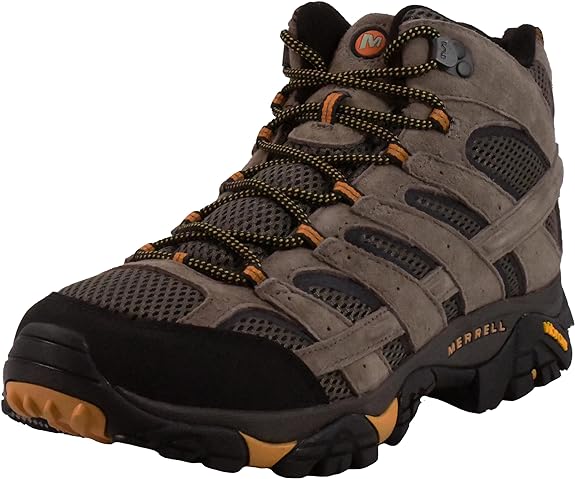
The Merrell Moab 2 Ventilator is a fantastic option for beginners who are looking for a reliable, all-around hiking shoe. Known for its comfort straight out of the box, the Moab 2 is ideal for short to moderate day hikes on varied terrain.
📝 Why We Recommend It: The Merrell Moab 2 Ventilator is perfect for beginners because it balances comfort, support, and durability without being too heavy or bulky.
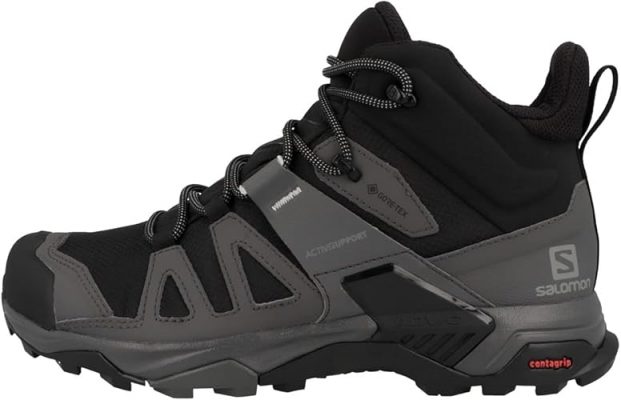
If you’re looking for something a bit more rugged with additional ankle support, the Salomon X Ultra 4 GTX is a great pick. These are waterproof hiking boots that perform well on steep, uneven, and wet terrains, making them suitable for longer and more challenging hikes.
📝 Why We Recommend It: These boots are a great option for beginners who plan to take on more technical trails or expect wet conditions, thanks to their strong support and waterproof design.
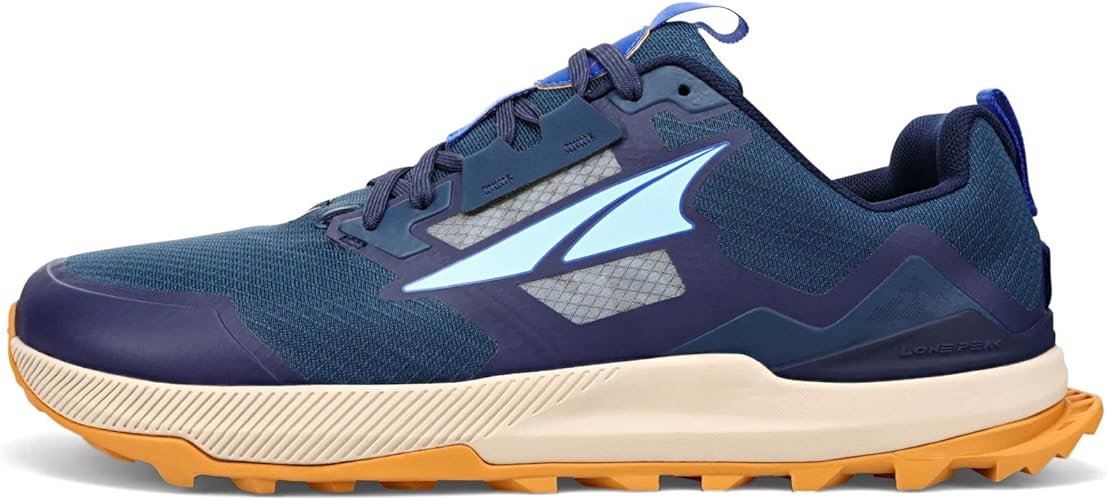
For hikers who prefer lightweight footwear and plan to stick to well-maintained, less challenging trails, the Altra Lone Peak 6 is an excellent choice. While designed as a trail running shoe, it’s also a favorite among hikers for its comfort and versatility.
📝 Why We Recommend It: The Altra Lone Peak 6 is perfect for beginners who prioritize comfort and want a shoe that feels light and natural. It’s ideal for easy to moderate hikes on well-maintained trails.
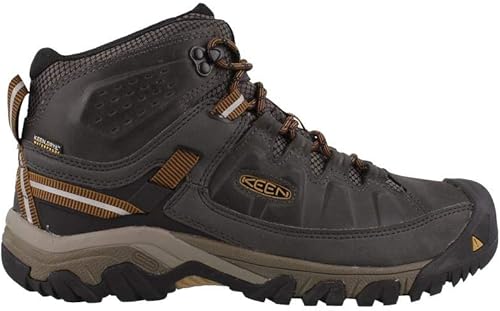
The KEEN Targhee III is a sturdy, mid-cut hiking boot designed for rougher trails and all-day hikes. It’s known for its rugged durability and solid protection, making it a dependable option for beginner hikers who plan to tackle more uneven and unpredictable terrains.
📝 Why We Recommend It: If you’re planning on tackling uneven, rocky, or wet trails, the KEEN Targhee III offers reliable performance and durability, ensuring that your feet are well-protected and supported.
Your backpack is your mobile storage when hiking, carrying everything you need for a safe and enjoyable adventure. Having the right backpack can make your hike much more comfortable by distributing weight evenly and ensuring you have easy access to essential gear like water, snacks, and safety equipment. Let’s explore what you should look for in a hiking backpack, and why choosing the right one matters.
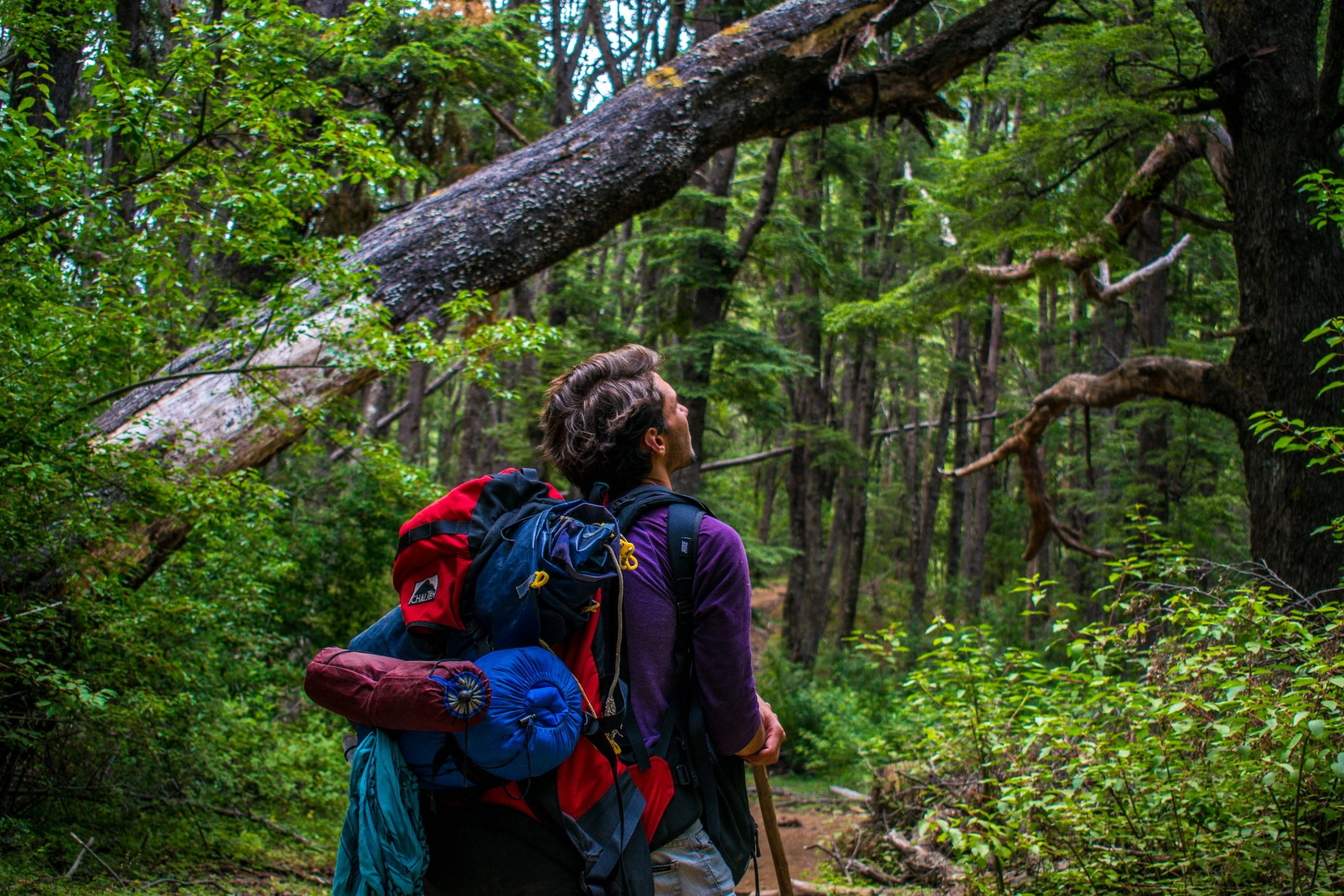
A well-fitted, properly organized backpack ensures that you carry all your essentials without feeling weighed down. It should offer enough space for your gear without being too bulky or uncomfortable. Whether you’re on a short day hike or a longer trek, the right backpack keeps you balanced and comfortable, preventing strain on your back, shoulders, and hips.
Choosing the right type of backpack depends on the length of your hike and how much you plan to carry. Here are the common types:
Daypacks (15-30L): Perfect for short hikes where you only need the basics: water, snacks, a light jacket, and a first-aid kit. Daypacks are lightweight, small, and ideal for hikes that last a few hours.
Hydration Packs: These are a subset of daypacks designed specifically to carry water bladders. They usually have less space for gear but are excellent for hikes in hot weather or on well-maintained trails where minimal supplies are needed.
Overnight or Multi-Day Backpacks (30-50L): If you plan on hiking for more than a day or need to carry extra gear like layers of clothing, cooking supplies, or camping equipment, these larger backpacks are essential. They have multiple compartments to help you stay organized and are designed for heavier loads.
When choosing a hiking backpack, consider these features to ensure both comfort and functionality:
Fit and Comfort: A backpack that fits your body size is crucial. Look for adjustable straps (shoulder, chest, and waist) to customize the fit to your body shape and height. A well-fitted backpack should rest snugly on your hips, distributing the weight evenly across your body.
Capacity: The size of your backpack (measured in liters) determines how much gear you can carry. For beginners, a 20-30L daypack is usually enough for day hikes. If you plan longer or overnight trips, aim for a larger pack (30-50L).
Padding and Support: Look for padded shoulder straps and a hip belt. These features take pressure off your shoulders and allow the weight to sit on your hips, reducing fatigue. A padded back panel with airflow channels is also great for ventilation to keep you cool.
Hydration Compatibility: Many modern backpacks come with a hydration sleeve designed to hold a water bladder (or reservoir), with a built-in tube that allows you to drink hands-free while hiking. This is especially useful for staying hydrated without stopping frequently.
Pockets and Compartments: Having multiple compartments makes it easy to organize your gear. A front or top pocket for quick-access items (like snacks or maps), side mesh pockets for water bottles, and an interior compartment for larger items help keep things tidy and accessible.
Rain Cover: Even if the forecast looks sunny, weather can change quickly in the wilderness. Many backpacks come with a built-in rain cover, which is a lightweight, waterproof cover that you can quickly pull over your pack in case of rain. If your backpack doesn’t have one, consider purchasing it separately.
Packing your backpack efficiently is important for comfort and accessibility. Here’s a quick guide to help:
Heaviest Items First: Place heavier items like water, extra layers, or your first-aid kit close to your back and near the middle of the pack. This keeps the weight centered and stable.
Easy-Access Items: Keep frequently used items like your map, snacks, phone, and sunscreen in easily accessible pockets. This way, you don’t have to unpack your bag just to grab something quickly.
Hydration: If your backpack has a hydration sleeve, place the water bladder in first so it sits comfortably against your back. If you’re using bottles, keep them in side pockets for easy access.
Balance the Load: Make sure the weight is evenly distributed so your backpack doesn’t lean to one side. This will help you stay balanced on the trail.
Once your backpack is packed, take a few minutes to adjust it to your body. Follow these simple steps to ensure the best fit:
Shoulder Straps: Tighten the shoulder straps so the backpack fits snugly, but not so tight that it digs into your shoulders.
Hip Belt: The majority of the weight should sit on your hips, so tighten the hip belt until it feels secure and comfortable.
Load Lifters: Many hiking backpacks have small straps near the top of the shoulder straps, called load lifters. Adjust these to pull the pack closer to your body, which helps balance the load.
Chest Strap: The chest strap keeps the shoulder straps from slipping off and improves stability. Make sure it sits comfortably across your chest, not too high or too low.
When you’re just starting out as a hiker, a comfortable and well-fitted backpack can make your hike much more enjoyable. Whether you’re heading out for a few hours or an entire day, having the right pack ensures you have all your essentials close at hand. Look for a backpack that offers a good balance of comfort, storage space, and easy access to your gear. Once you’ve found the perfect fit, you’ll be ready to tackle the trails without feeling weighed down.
Choosing the right backpack can greatly enhance your hiking experience, allowing you to carry all your essentials comfortably and efficiently. Below are two excellent backpack options for beginners, each designed to meet different needs based on the type of hike and the amount of gear you’re bringing.
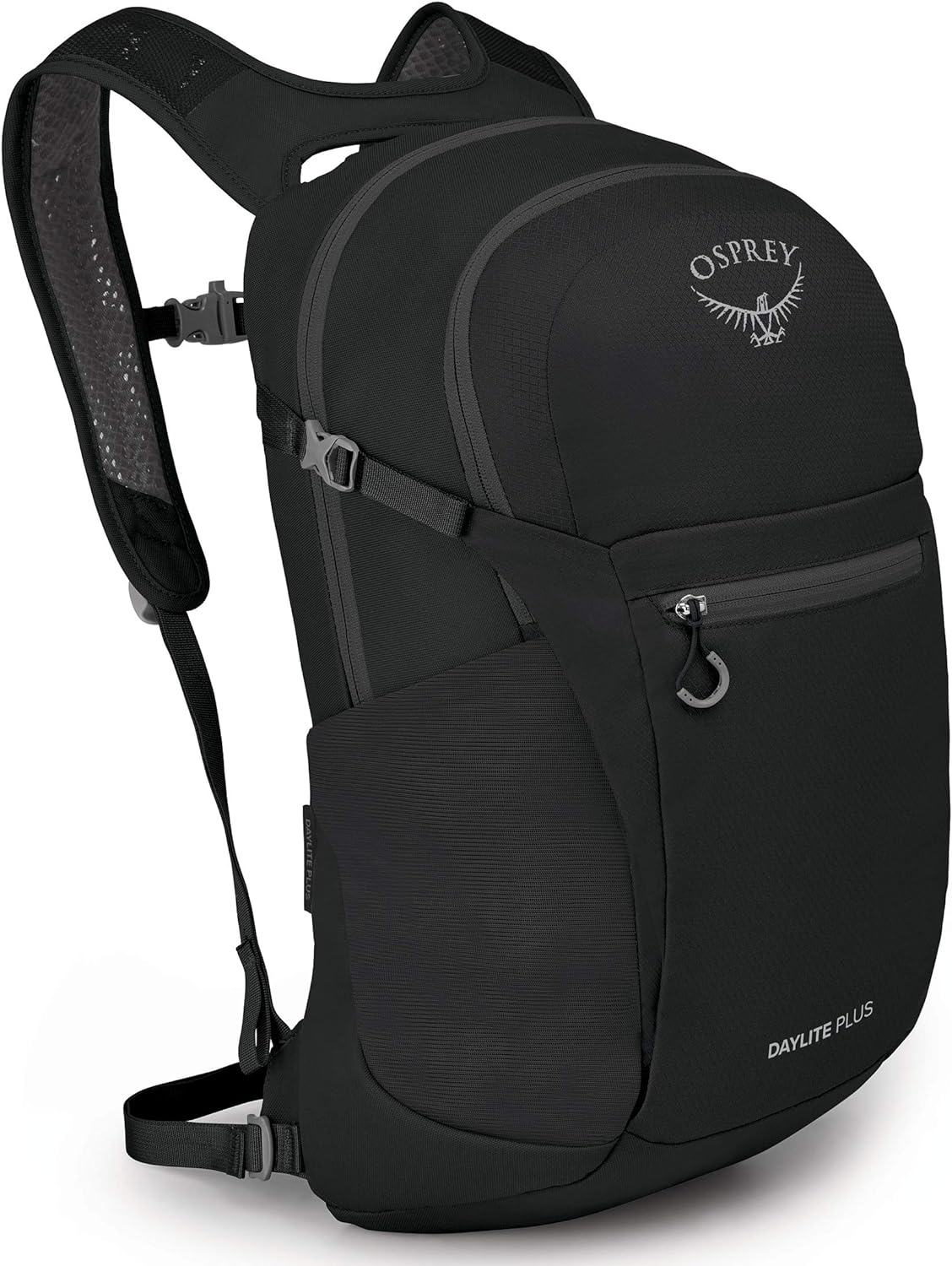
The Osprey Daylite Plus is one of the best daypacks for beginners, offering the perfect balance between size, comfort, and versatility. It’s ideal for short to moderate day hikes where you only need to carry the basics like water, snacks, and a few personal items.
📝 Why We Recommend It: The Osprey Daylite Plus is a versatile, lightweight pack that’s perfect for beginner hikers who need a reliable and comfortable daypack. It offers the right amount of storage for short hikes without being too bulky.
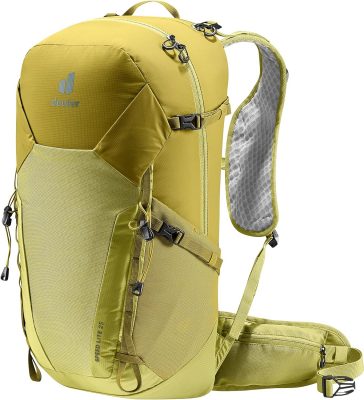
The Deuter Speed Lite 24 is a lightweight yet durable option for those who prefer a bit more space and versatility. It’s ideal for longer day hikes or more technical trails where you may need extra gear like additional clothing, snacks, and safety equipment.
📝 Why We Recommend It: The Deuter Speed Lite 24 is a fantastic choice for hikers who want a bit more space and comfort for longer trails. Its lightweight design and spacious compartments make it a reliable option for carrying extra gear without sacrificing comfort.
When you’re out on the trail, weather conditions can change quickly, so it’s important to layer your clothing for comfort and protection. The right layers will keep you warm, dry, and comfortable throughout your hike, regardless of temperature fluctuations. Understanding how to layer your clothing can make your outdoor experience much more enjoyable and safe.
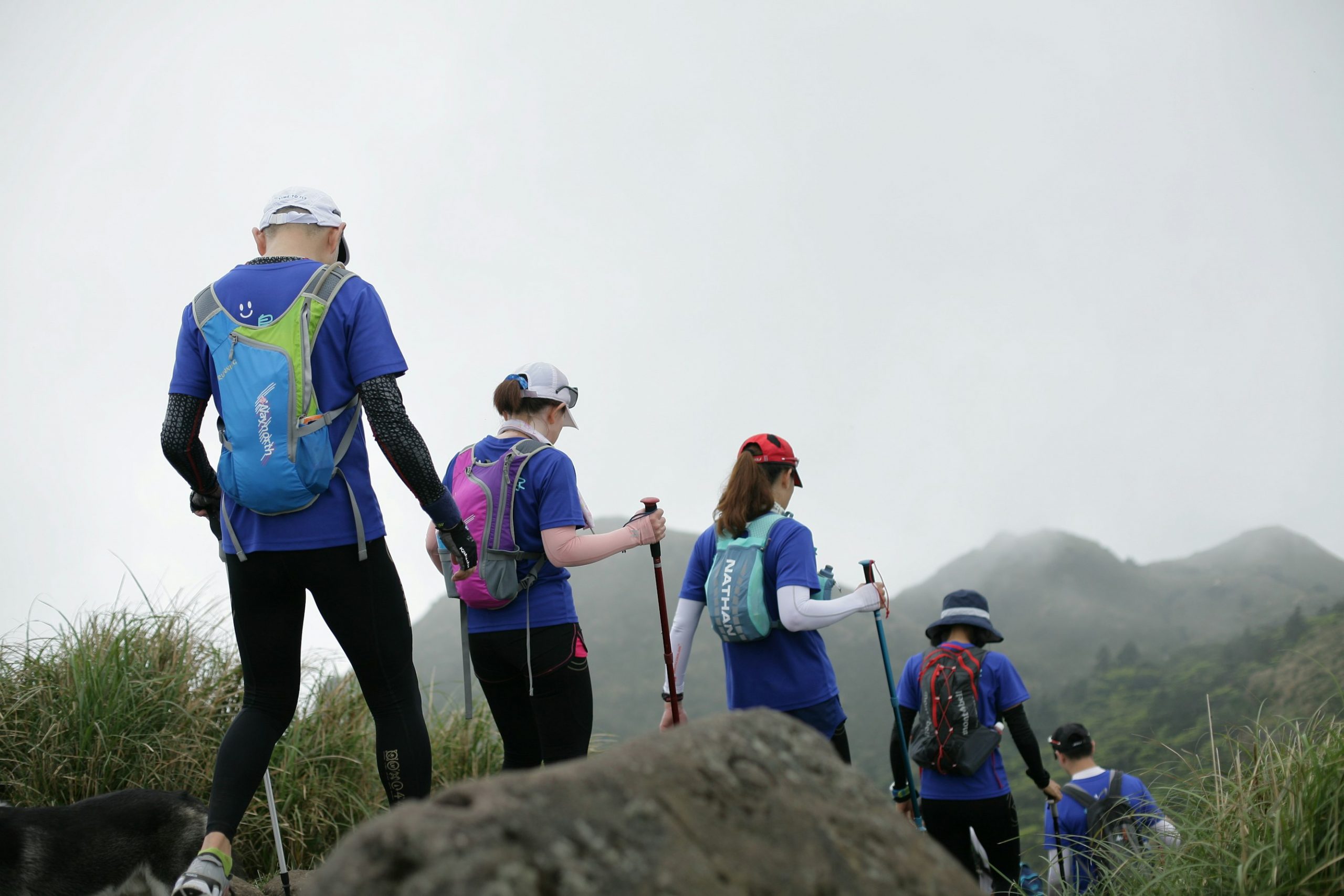
Layering allows you to adjust your clothing depending on the weather and your activity level. As you hike, your body heats up, but when you stop or the weather changes, you might start to cool down quickly. By wearing layers, you can easily add or remove clothing to regulate your body temperature and stay comfortable in varying conditions.
There are typically three main layers to focus on:
Let’s break down each layer and explain why it’s essential.
The base layer is the clothing you wear closest to your skin, and its main job is to wick moisture away (like sweat) to keep you dry. Keeping your skin dry helps regulate your body temperature and prevents chills, especially in cooler weather.
📝 Tip: Avoid cotton as a base layer. Cotton holds onto moisture, which can make you feel cold and uncomfortable if you sweat.
The mid layer provides insulation to keep you warm. Its purpose is to trap body heat and act as a buffer between your base layer and the outside environment. You can adjust the insulation depending on the weather, adding or removing layers as needed.
📝 Tip: Look for mid layers that are easy to pack and can be quickly put on or taken off. Many fleece jackets and insulated layers are packable and can fit neatly into your backpack when not in use.
The outer layer (also called the shell) is your first line of defense against the elements, such as wind, rain, and snow. Its primary job is to keep you dry and protected from wind or rain while still allowing sweat and moisture to escape from the inside.
📝 Tip: Choose an outer layer that packs down small so you can easily stow it in your backpack if the weather clears up.
Here’s a quick guide on how to adjust your layers based on the weather:
Warm Weather: In hot conditions, you may only need a lightweight base layer or a moisture-wicking shirt. Shorts or lightweight hiking pants are ideal, and don’t forget sun protection with a hat and sunscreen.
Cool Weather: Start with a moisture-wicking base layer and add a fleece or light jacket for insulation. Always carry a waterproof jacket in case of rain.
Cold Weather: Layer up with a warm base layer, an insulated mid layer (like a down jacket), and a waterproof outer layer. Keep a warm hat and gloves handy, as extremities lose heat quickly in cold conditions.
Rainy Weather: Prioritize a waterproof outer layer, but don’t forget to layer underneath with moisture-wicking materials. If it’s cold and rainy, wear an insulated mid layer for extra warmth.
Layering your clothing properly is one of the easiest ways to stay comfortable and safe while hiking. By choosing the right base, mid, and outer layers, you can adapt to changing weather conditions without feeling too hot, cold, or wet. Whether you’re hiking in hot or cold weather, understanding how to layer ensures you stay comfortable throughout your hike.
When it comes to hiking, choosing the right clothing is crucial to staying comfortable, dry, and warm, no matter the weather. Here are four highly recommended clothing items for hiking beginners, each designed to keep you comfortable and protected on the trail.
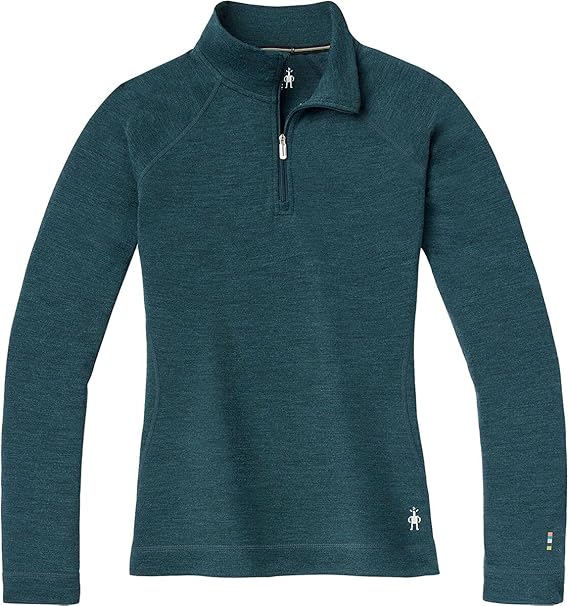
The Smartwool Merino 150 Base Layer Top is an excellent choice for your base layer. Made from merino wool, this shirt excels at wicking moisture away from your skin while keeping you cool in warm weather and warm in cooler conditions.
📝 Why We Recommend It: The Smartwool Merino 150 is versatile, lightweight, and perfect for regulating body temperature, making it a great base layer for any hike.

The North Face TKA Glacier Fleece Pullover is a fantastic mid-layer option, offering lightweight warmth and excellent breathability. This fleece is perfect for cooler hikes when you need extra insulation without adding too much bulk to your layers.
📝 Why We Recommend It: The North Face TKA Glacier Fleece Pullover is a great choice for hikers looking for a comfortable, warm, and lightweight fleece that can easily be layered or worn on its own during cooler hikes.
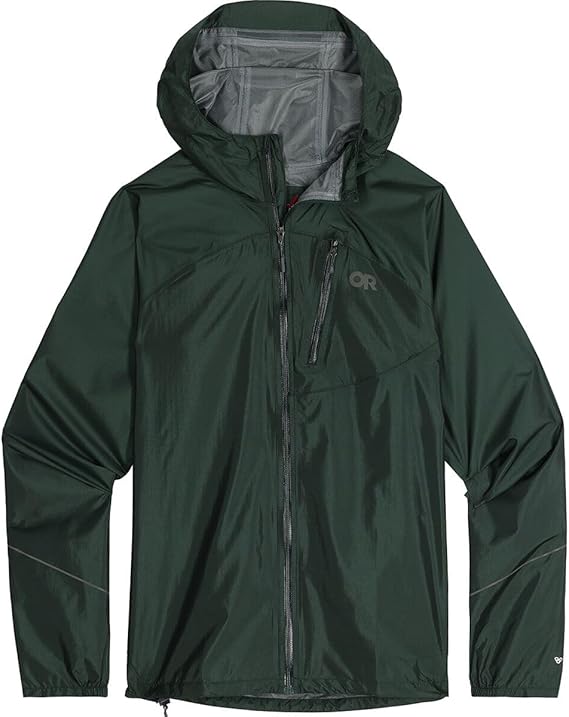
The Outdoor Research Helium Rain Jacket is a top pick for your outer layer. This lightweight, waterproof jacket is designed to keep you dry in rainy conditions while remaining breathable and easy to pack away when the weather clears up.
📝 Why We Recommend It: The Outdoor Research Helium Rain Jacket is a perfect companion for hiking in rainy or windy conditions, offering excellent protection without weighing you down.
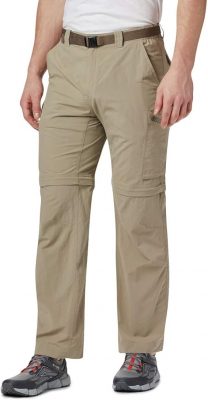
The Columbia Silver Ridge Convertible Pants are a great option for hikers who want versatility on the trail. These pants can be easily converted into shorts, making them perfect for hikes in changing weather conditions.
📝 Why We Recommend It: The Columbia Silver Ridge Convertible Pants are ideal for hikers who want flexibility and comfort, making them a great option for all-day adventures, especially in changing conditions.
Staying on the right path is crucial for a safe and enjoyable hike. Navigation tools ensure you don’t get lost, especially on unfamiliar trails.
🧭 Tip: Practice basic map reading and compass skills before heading out, especially for longer or more remote hikes.
Staying hydrated and fueled is key to maintaining energy during your hike. Carry enough water and snacks to keep yourself going.
💧 Tip: Sip water regularly rather than waiting until you feel thirsty to avoid dehydration.
Having a basic first aid kit and safety gear can make a big difference in an emergency.
⛑️ Tip: Learn how to treat common hiking injuries like blisters, sprains, and minor cuts.
Trekking poles provide added stability, especially on uneven or steep terrain.
🦯 Tip: Use trekking poles during descents to reduce strain on your legs.
Protecting yourself from the sun is crucial, even on cloudy days.
🧢 Tip: Don’t forget often overlooked areas like the back of your neck and ears when applying sunscreen.
You might not plan to hike after dark, but always be prepared with a reliable light source.
🔦 Tip: Pack a light even for day hikes — unexpected delays can lead to darkness.
Starting your hiking journey as a beginner can be both exciting and a bit overwhelming, but with the right gear and preparation, you’ll be ready to tackle any trail with confidence. Footwear, clothing, and a good backpack form the foundation of a successful hike, while navigation tools, hydration, and safety gear ensure you stay on track, energized, and prepared for any challenges.
Don’t forget to layer up for changing weather conditions, protect yourself from the sun, and carry a light source just in case your hike takes longer than expected. Extras like trekking poles, a portable charger, and insect repellent can enhance your comfort and enjoyment on the trail.
Remember, hiking is not just about reaching the destination, but enjoying the journey. Take your time, stay safe, and most importantly, have fun exploring the beauty of nature. With the right mindset and gear, your hiking adventures will be rewarding, memorable, and filled with amazing views! 🌲👟
Affiliate Disclosure: Drocero.com sometimes gets paid for listings, through sponsors or affiliate programs like Amazon Associates. Clicking a link helps keep Drocero.com free, at no extra cost to you!
Drocero.com is a participant in the Amazon Services LLC Associates Program, an affiliate advertising program designed to provide a means for sites to earn advertising fees by advertising and linking to Amazon.com.
Amazon and the Amazon logo are trademarks of Amazon.com, Inc. or one of its affiliates.
Necessary cookies are absolutely essential for the website to function properly. These cookies ensure basic functionalities and security features of the website, anonymously.
| Cookie | Duration | Description |
|---|---|---|
| cookielawinfo-checbox-analytics | 11 months | This cookie is set by GDPR Cookie Consent plugin. The cookie is used to store the user consent for the cookies in the category "Analytics". |
| cookielawinfo-checbox-functional | 11 months | The cookie is set by GDPR cookie consent to record the user consent for the cookies in the category "Functional". |
| cookielawinfo-checbox-others | 11 months | This cookie is set by GDPR Cookie Consent plugin. The cookie is used to store the user consent for the cookies in the category "Other. |
| cookielawinfo-checkbox-necessary | 11 months | This cookie is set by GDPR Cookie Consent plugin. The cookies is used to store the user consent for the cookies in the category "Necessary". |
| cookielawinfo-checkbox-performance | 11 months | This cookie is set by GDPR Cookie Consent plugin. The cookie is used to store the user consent for the cookies in the category "Performance". |
| viewed_cookie_policy | 11 months | The cookie is set by the GDPR Cookie Consent plugin and is used to store whether or not user has consented to the use of cookies. It does not store any personal data. |
Functional cookies help to perform certain functionalities like sharing the content of the website on social media platforms, collect feedbacks, and other third-party features.
Performance cookies are used to understand and analyze the key performance indexes of the website which helps in delivering a better user experience for the visitors.
Analytical cookies are used to understand how visitors interact with the website. These cookies help provide information on metrics the number of visitors, bounce rate, traffic source, etc.
Advertisement cookies are used to provide visitors with relevant ads and marketing campaigns. These cookies track visitors across websites and collect information to provide customized ads.
Other uncategorized cookies are those that are being analyzed and have not been classified into a category as yet.